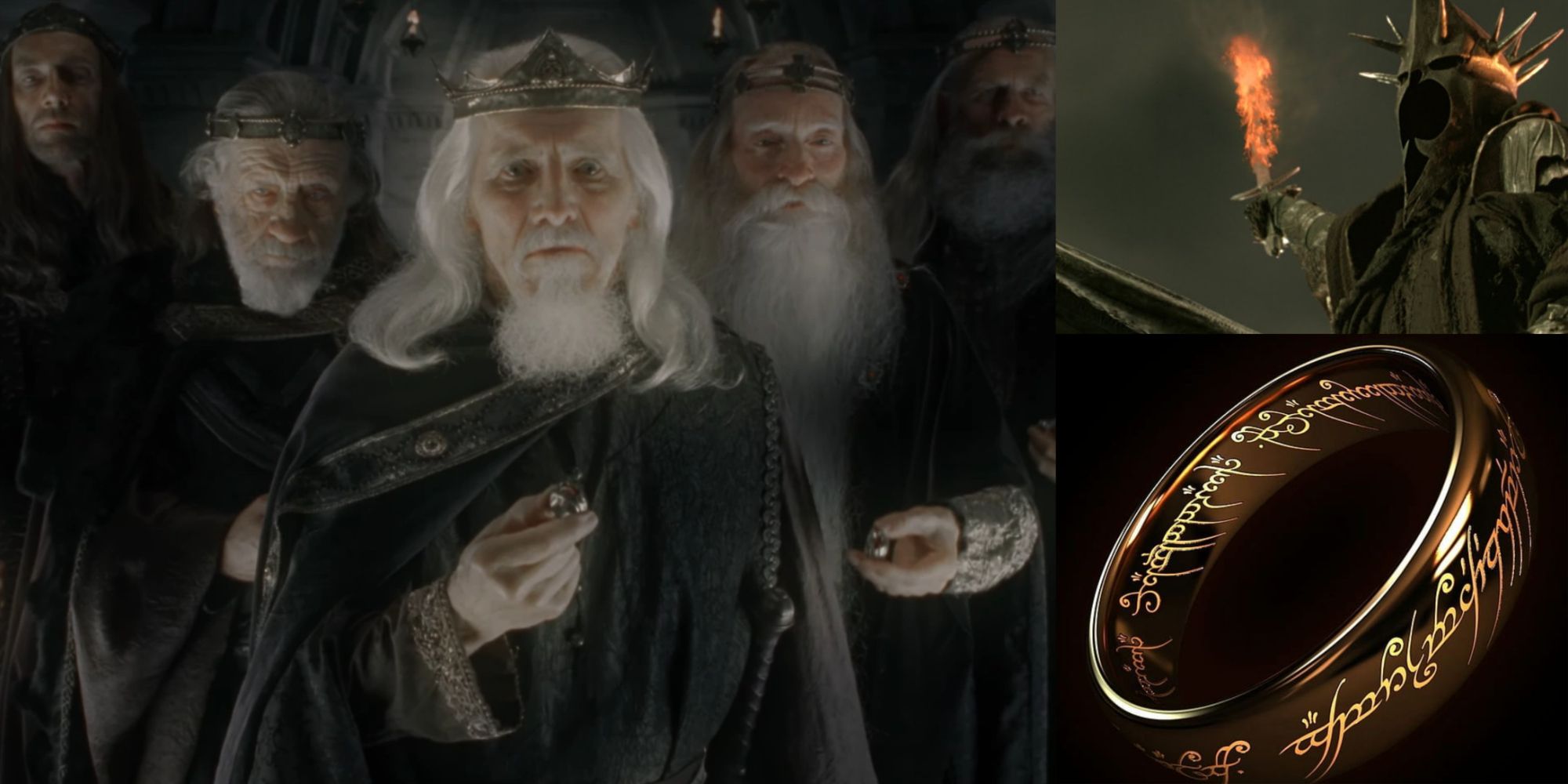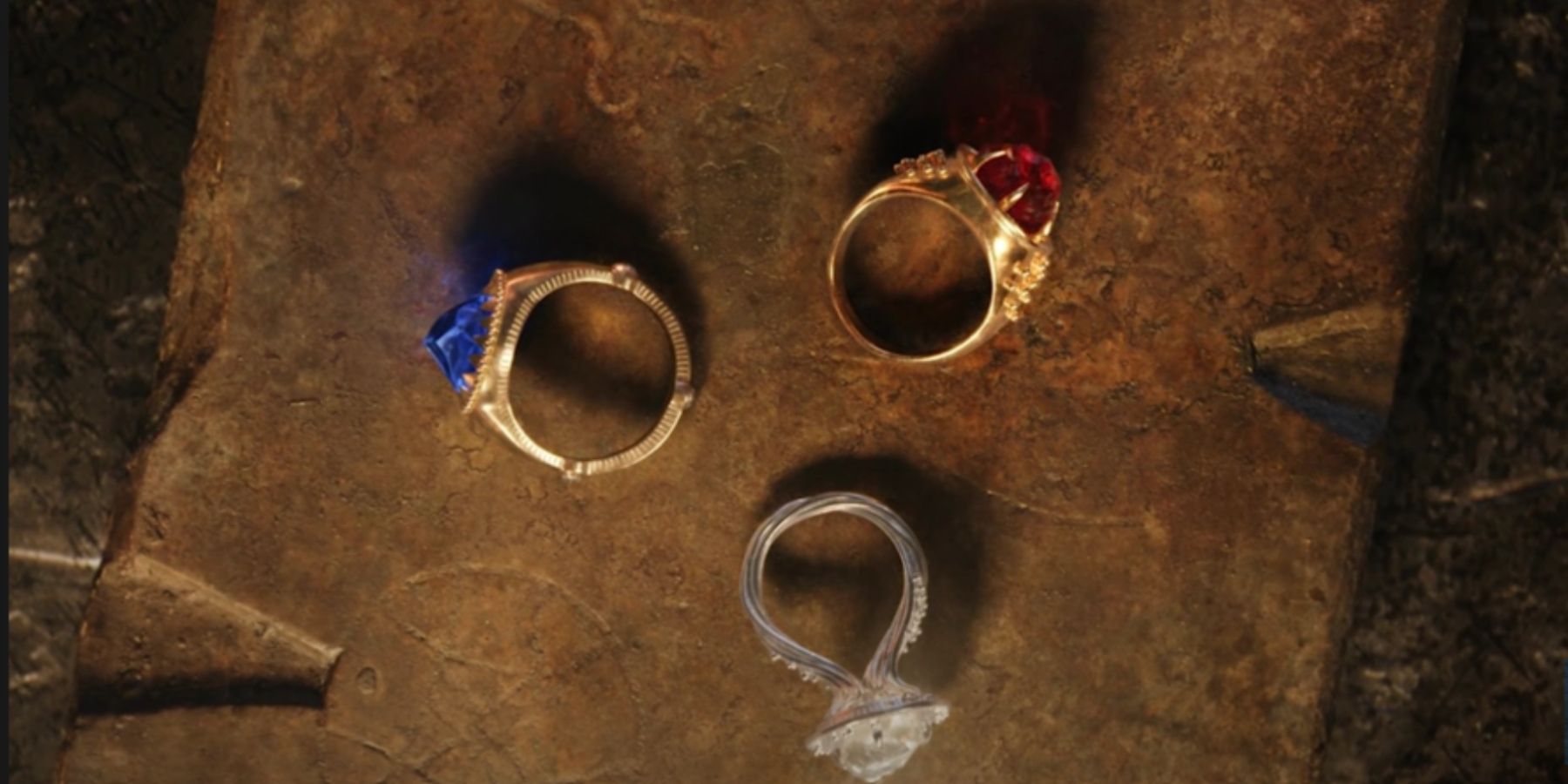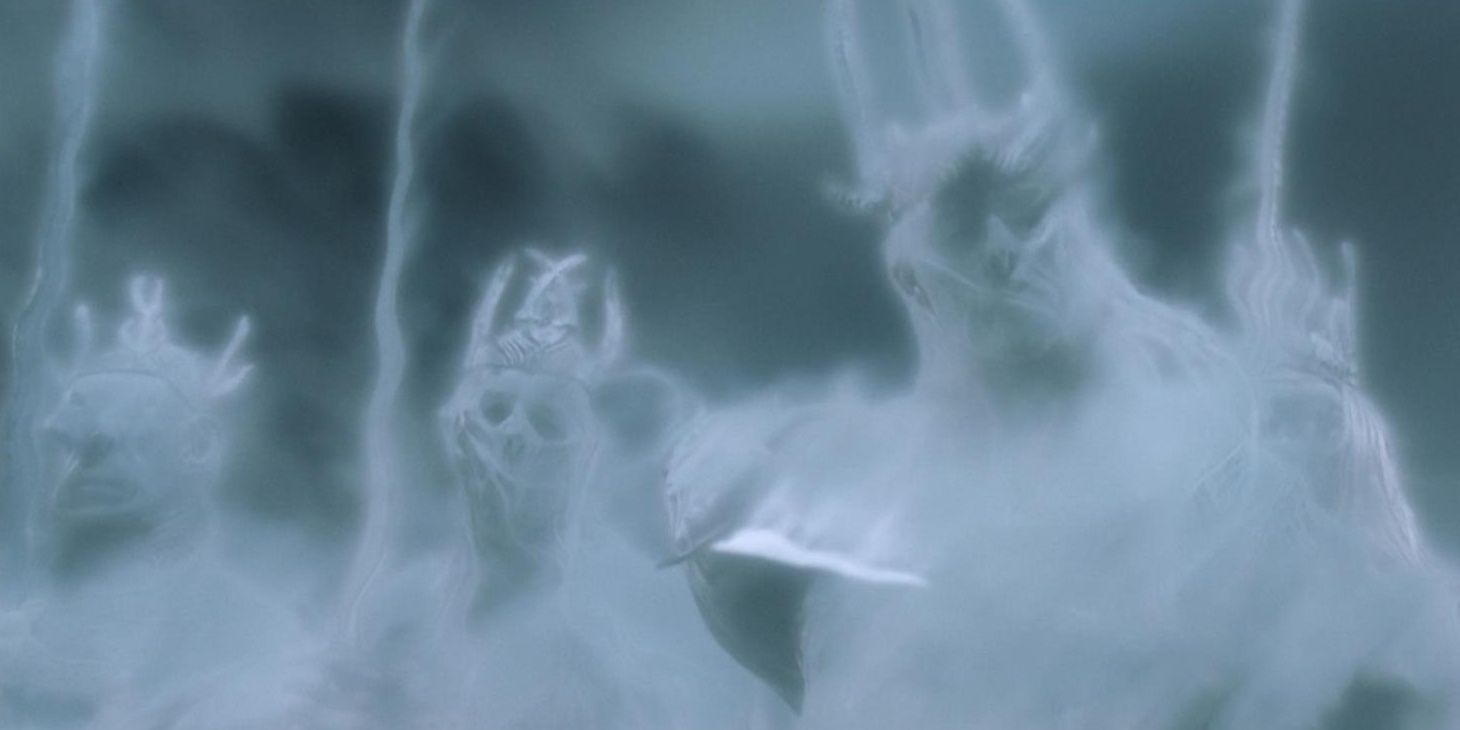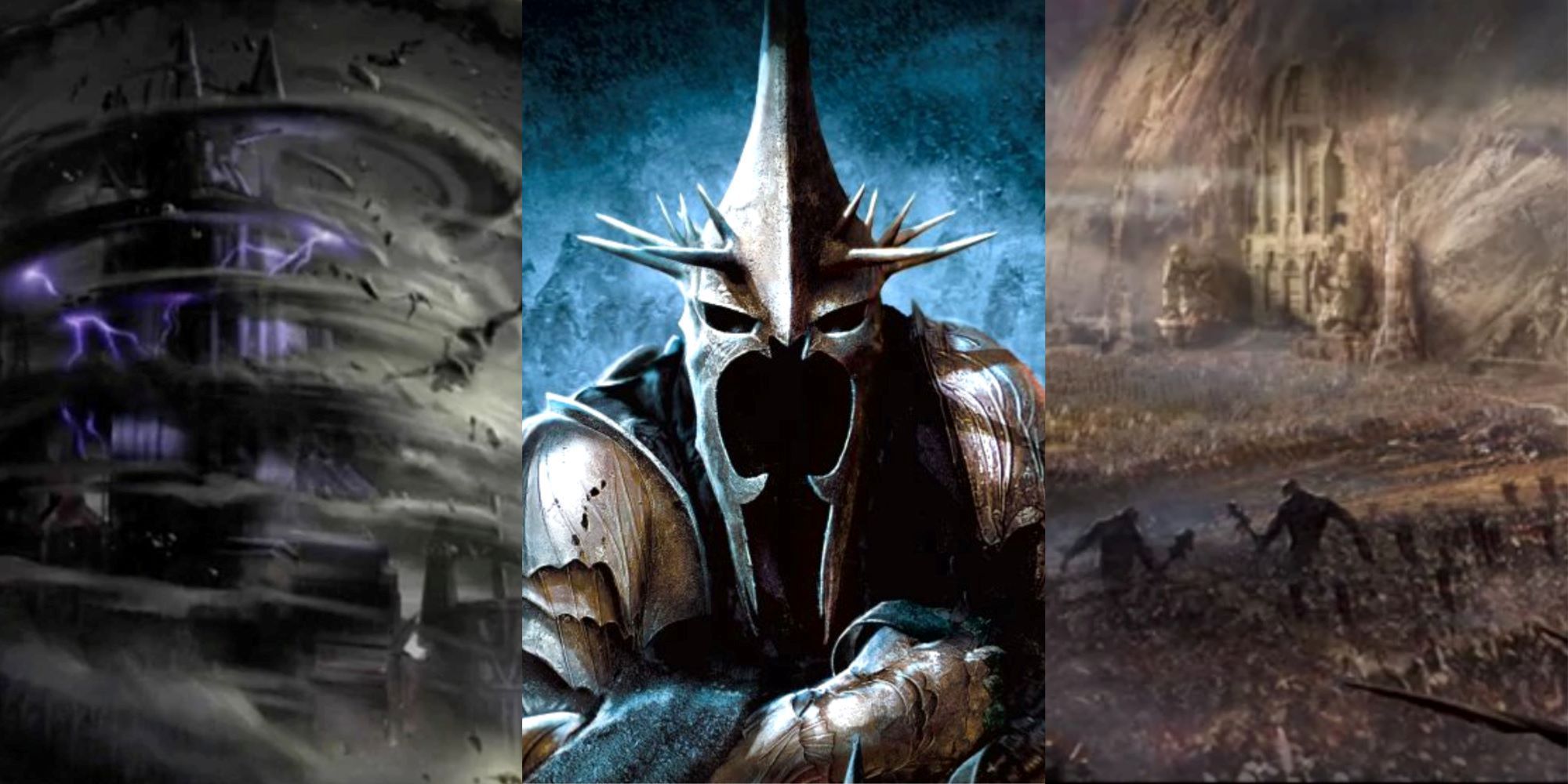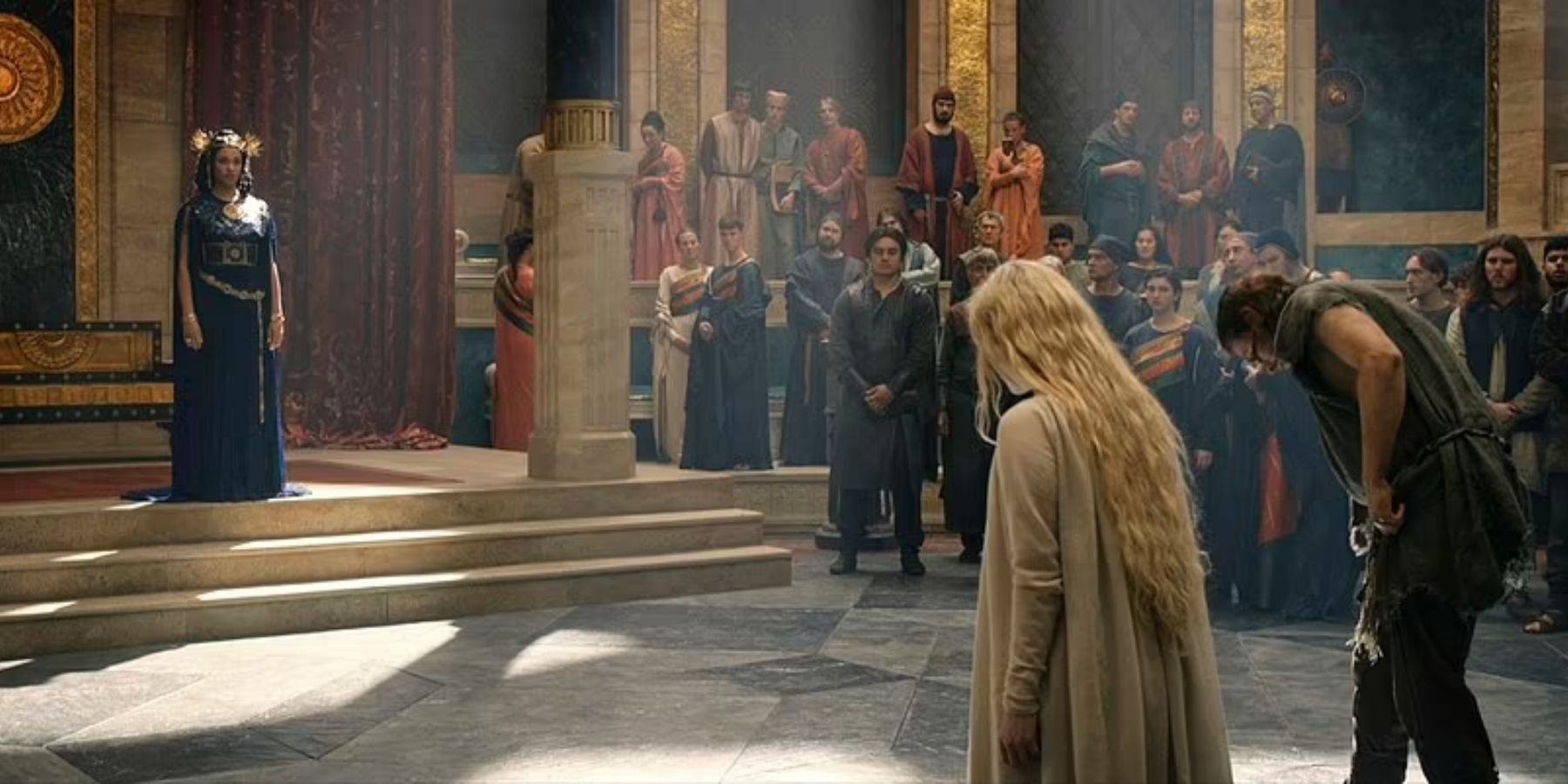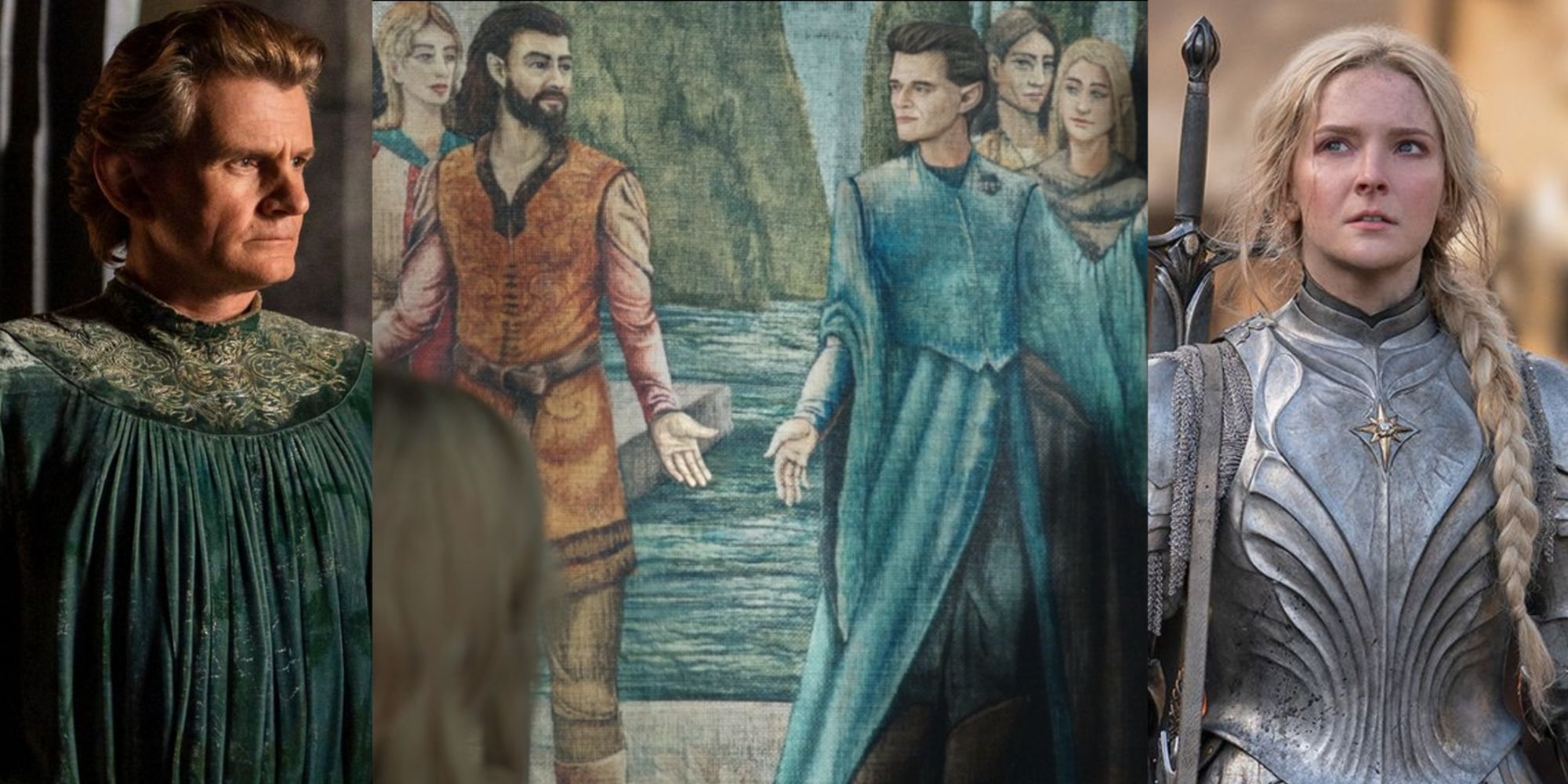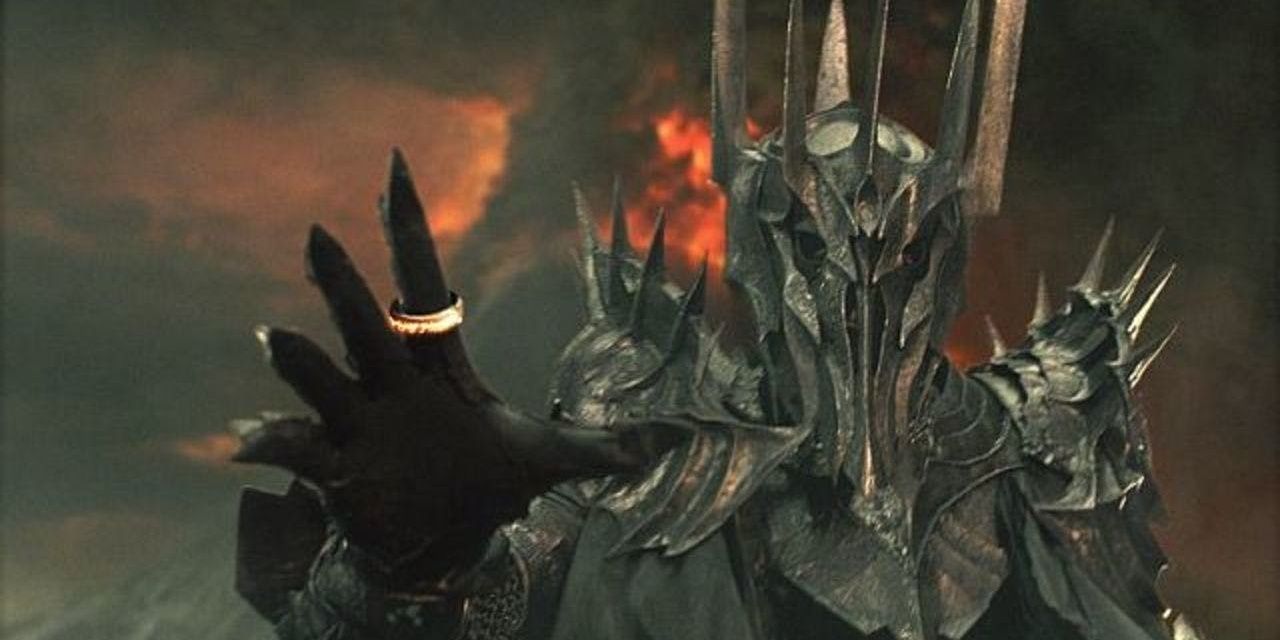It took eight episodes, but the season finale of The Lord of the Rings: Rings Of Power finally gave the viewers a glimpse at a few actual rings. Season two of Rings of Power will likely have a few more, now that the storyline has been set up for Sauron to manipulate the Elves into making the rings for the Dwarves and Men.
"Nine for the mortal men doomed to die," says one of the most ominous lines of the poem, and it seems that the fate of those humans that accepted Sauron's gift of the rings was the worst of all. The Elves were able to hide their rings and took them off when Sauron tried to control them. The Dwarves seemed to be resistant or even immune to the negative powers of the ring. The Men of Middle-earth had no such defenses.
1 Designed To Appeal To Mortals
When Sauron was disguised as Annatar, he designed the rings with the help of the smiths of Eregion, and the Rings of Men had properties that the others did not. They turned the wearer invisible and extended their lifespan. They also gave them vast power and wealth, but, like so many of his other gifts, Sauron neglected to mention important details about the true nature of the rings.
Sauron intuitively knew that humans would have weaknesses, and would be willing to take all kinds of risks to escape from death. This was partly how Annatar was able to seduce the Numenorean kings and what motivated them to sail to Valinor in search of immortality.
2 The Nazgûl
The line in the poem references human mortality, and Sauron knew this was the deadly weakness of the human race. He appealed to the fear that Men had of death, and as Annatar promised they extended the life of the wearer, but he didn't mention that this meant eternal life as one of his ghostly servants.
In The Silmarillion, Tolkien describes those that are cursed by the Nine Rings as ones who "cried with the voices of death." He only names two of them, the Witch King and Khamûl the Easterling, a suggestion that only the most powerful retained some kind of identity while the others simply became mindless ghosts.
3 The Witch King of Angmar
It would have taken hundreds of years for the rings to turn their wearers into wraiths, and some of the Kings of Men became powerful sorcerers and scholars during that time, gathering knowledge along with power. The ringwraiths appeared late in the Second Age of Middle-earth, and the Witch-king of Angmar was the most terrifying.
Little is known about the origins of the Witch King, and Tolkien suggests that he was once a Numenorean but his original name has been lost, probably forgotten even by him. He led Sauron's attacks against Gondor's sister kingdom, Arnor, and the land wouldn't be restored for another thousand years.
4 King Khamûl
The only other ringwraith that Tolkien ever named was King Khamûl. He was unique because he was an Easterling as opposed to a Numenorean. He was nicknamed the Black Easterling or the Shadow of the East, and he ruled a kingdom in either the Southlands or somewhere in Rhun.
Khamûl tends to be the ringwraith with the most screen time in movie adaptations and even has ample lines in the book, although not as many as his boss, the Witch-king. He was the ringwraith who questioned Farmer Maggot as to any wayward Hobbits or Bilbo's whereabouts, and, after the Witch-king was killed, he became the leader of the Nazgul.
5 The House of the Mírdain
Unlike the rings of the Dwarves and the Elves, most of the rings of Men were kept in the kingdom of Eregion in the Gwaith-i-Mírdain, also known as the House of the Mírdain. This was the guild house and workshop of Celembribor and his fellow artisans. Tolkien is unclear as to how many, but most if not all of the Rings of Men were stored here, in a place that many believed was the safest location in all of Middle-earth.
Sauron was angered by the defiance of Celembribor when he found out about the three Elven rings. He attacked Eregion in the Second Age to get the rings back, and it took him a long time to amass the forces to do so. Celembribor made his final stand on the steps of the House of the Mirdain before he was taken prisoner by Orcs.
6 Sauron Took Them All Back
Some of the Dwarf rings were lost forever and Sauron never managed to find the Elven rings even after he learned about their existence, but he managed to get all of the rings of Men back. Most of them were being stored in Eregion, and he was able to take them back after attacking the kingdom and sacking it.
As for the others, they came back to Sauron through their bearers, who became his servants and came to him willingly with their rings. He might have envisioned something similar for Dwarves, but their unexpected resistance to the magic of the rings ruined his plans.

